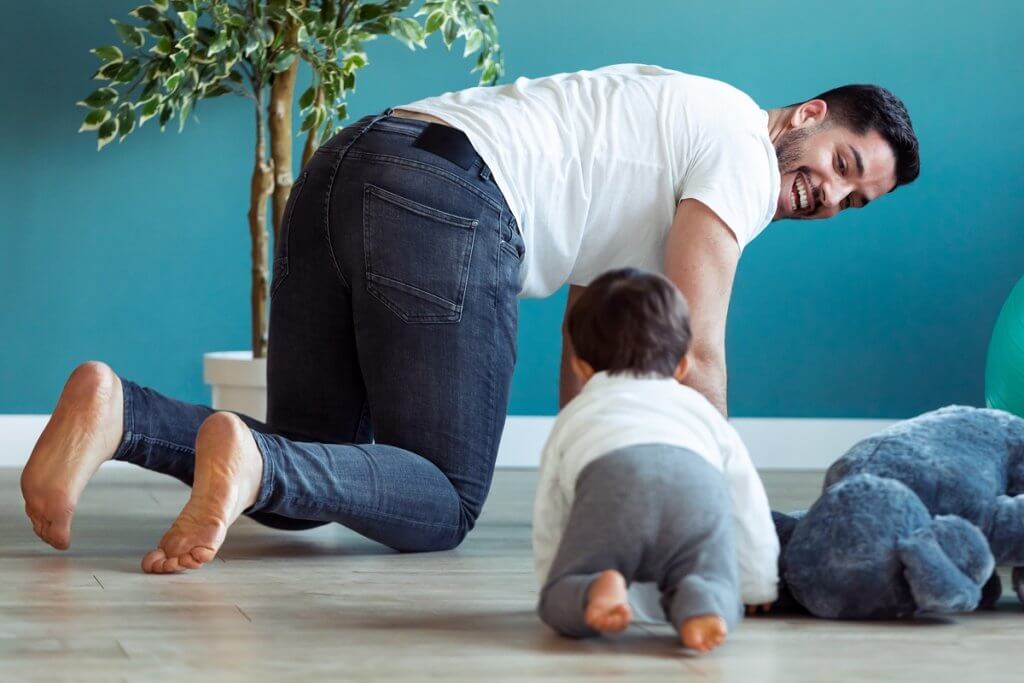Crawling is a big milestone in your baby’s development. It means they are learning to explore their environment, and they will soon be crawling all over the house! In order to keep them safe, you’ll need to make sure there are no hazards in your home. Here are a few ways you can childproof your home when crawling starts.
Install Safety Gates
Installing safety gates is one of the most important ways to childproof your home during the crawling stage. Babies are curious and are determined to explore their surroundings. That means crawling up or down the stairs or getting into rooms they shouldn’t be in! Installing safety gates at the top and bottom of the stairs will keep them safe from falling and tumbling.
Move or Cover Cords and Cables
Anything that babies can wrap around their necks is a deadly hazard in the home. This includes cords on blinds and electrical cables for home devices. The most effective way to make sure your blinds are safe is to replace your current blinds with cordless window treatments; however, that is not always financially possible. If you keep your cords, you’ll need to be diligent about securing them high on the wall and 100% unreachable by your baby, even if they crawl up on the back of the couch.
Exposed electrical cables for lamps, TVs, computers, and other devices are another hazard. When possible, rearrange your setup to keep wires blocked or hidden by furniture, or use baby-proof cable covers to keep them away from curious hands (and mouths).
Block or Cover Electrical Outlets
In addition to securing or hiding your device cables, you’ll want to either block electrical outlets from reach with furniture or cover them with some sort of outlet cover. Outlets that currently have something plugged in can run the risk of your child pulling out the cord and getting into trouble when you’re not looking. Uncovered unused outlets are enticing spaces for your little one to stick their fingers, toys, or other objects that aren’t supposed to be shoved into outlets. Single outlet plug covers are popular among parents of young kids, but they can become a choking hazard if they are loose and get pried off by your little one’s fingers. Another option is to replace the outlet wall plates throughout your home with sliding covers or outlet cover boxes.
Move or Secure Wobbly or Heavy Furniture
When babies start crawling, they’ll also start using furniture and other objects to pull themselves up and stand. Furniture or home decor that is not secured can be dangerous for exploring babies. If it wobbles, moves easily across the floor, tips easily, or has heavy objects on top of it, your baby could get hurt. Make sure to secure anything that might tip over if your baby would use it to stand.

Use Safety Locks
Another way to childproof your home when exploring begins is by using safety locks. Bathroom doors, cabinets, and drawers are all places you’ll likely want to put on a safety lock, especially if they contain cleaning products or choking hazards. Safety locks add a little bit of inconvenience when you need to quickly access something, but you can also rest assured knowing your baby won’t get into things they shouldn’t.
Move Cleaning Products and Chemicals Out of Reach
While child safety locks are effective, it may just be a good idea to move any cleaning supplies or other chemicals out of reach just in case. You can do this by storing them either on high shelves, in high cabinets, or stored in containers with child-proof lids. Also, always be sure to put cleaning supplies away when you are done using them.
Put Your Houseplants in Safe Places
Houseplants are beautiful and add life to your home, but many houseplants are toxic for babies and can cause rashes, swelling, and nausea if eaten. Protect your baby (and your plants) by moving them up high and securely out of reach.
Cover Sharp Corners with Furniture or Corner Cushions
Sharp edges of furniture, especially coffee tables and entertainment centers, are another hazard for crawling and walking babies because they are often head-level. To avoid your baby getting hurt crawling or walking into sharp corners, you can either move the furnishing to prevent access or use corner cushions/covers that will soften the edge before they come in contact with it.
By taking the time to childproof your home before crawling begins, you can be sure that all of your baby’s exploring will take place in a safe environment. If you have any questions about home hazards for babies, don’t hesitate to reach out to your child’s health provider.
Do you have more questions about keeping your baby healthy in Salem Oregon? Contact our friendly staff at WFMC Health or become a new patient today!